I started compiling shoe and shoe-rose research few months back when working on ball clothes, but didn't have time to post it. So now, without further ado: early nineteenth century shoes with rosettes and bows. Unless otherwise labelled, they're from the Victoria and Albert Museum (click date under the picture for full listings).
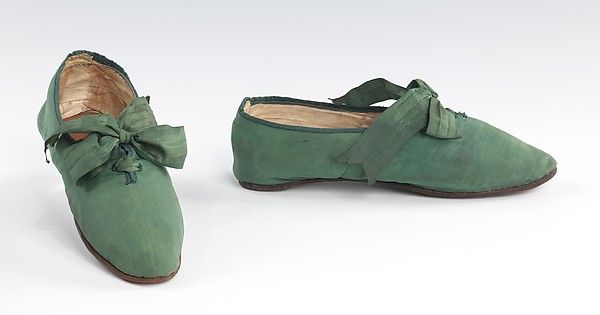 |
| c, 1810-1829, from The Met |
 |
| c. 1815-1820, from The Met |
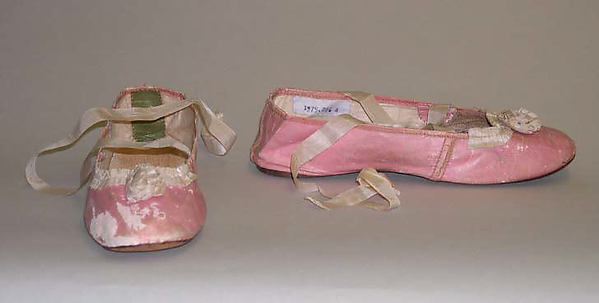 |
| 1812, from The Met |
Observations: All of the shoes appear to be made on straight lasts (no obvious right and left); excepting the earliest pair with its low heels, the shoes are all flats. Most have open tops, similar to a "ballet flat"; the earliest two pairs from the V & A (and all three from The Met) have shallow pointed or rounded toes; the four later V & A pairs have square toe boxes. Excepting the earliest (patterned) example, the shoes tend to be solid colored. From the descriptions, these are primarily silk uppers, with leather soles and linen linings.
The "roses" take different shapes: bows, coiled 'rosettes', layered fabric 'petals', and what appears to be a fringe rosette around a button. For the most part, the decorations tend to be the same color as the shoe itself; of the three with contrasting decorations, two have white bows on colored shoes. Where used, the laces/ribbons also match the shoe color, save for the 1812 pair in which the ribbons match the contrasting rosette.
So, to imitate a Regency or Georgian dancing slipper with modern shoes, I'd look for a plain, solid-colored, fabric upper with an open top; no heel; rounded (1800-1820s) or square (1820s+) toes; and minimal right-left emphasis. The "look" can be further enhanced by adding color-coordinated rosettes or bows, and possibly ribbon laces. In an ideal world, of course, I'd have snagged a pair of Robert Land's regency slippers before he retired. Now, I'm thinking I'll just have to learn how to make shoes.

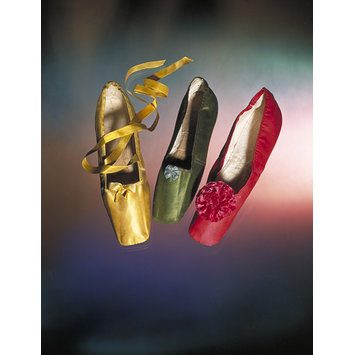
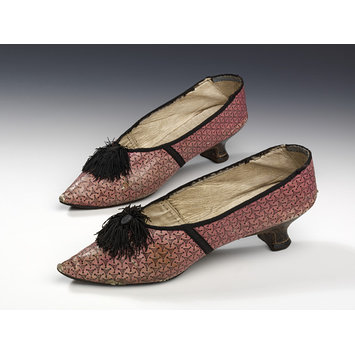
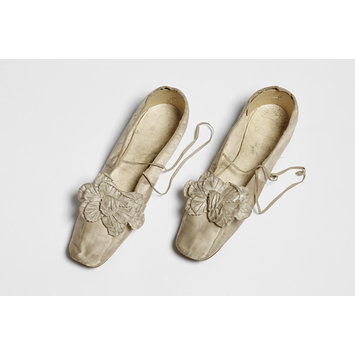

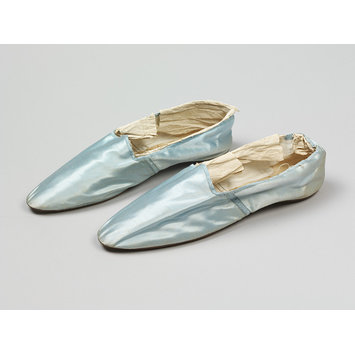
I am reading THE MURDER OF MR WICKHAM; show roses are mentioned. Thank you.
ReplyDeleteLol I’m reading that now which is why I looked it up
ReplyDeleteSame
ReplyDeleteSame!
ReplyDeleteSame! Great book. Have started “The Late Mrs. Willoyghby.” Just as good as the first!
ReplyDeleteHaha. It was The Late Mrs. Willoughby that got me to look up shoe roses from 1820s.
ReplyDeleteI am also reading that same series! 😂 thank you for your informative post that answered my shoe questions from The Murder of Mr. Wickham and The Late Mrs. Willoghby!
ReplyDeleteComing here while reading the 3rd book, the Perils of Lady Catherine de Bourgh
ReplyDeleteReading the third installment in the series, The Perils of Lady Catherine de Bourgh, and shoe roses were mentioned again!
ReplyDeleteListening to Longbourne, the dilemma of saving shoe roses and color matching is mentioned
ReplyDeleteThanks for sharing this! As others I’m here because of Mr. wickham!
ReplyDeleteI am doing a shoe rose workshop in September. Thank you very much for seeking out images of extant examples. I hadn't had much luck prior to this.
ReplyDelete